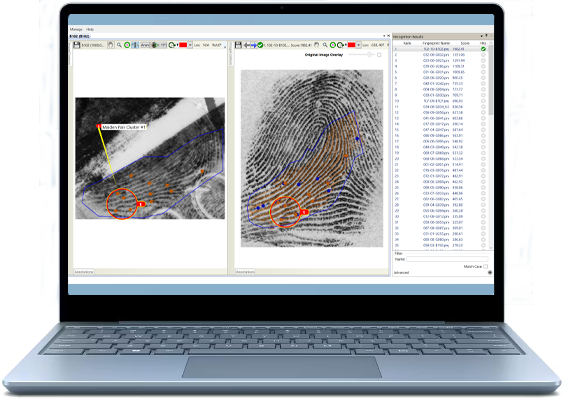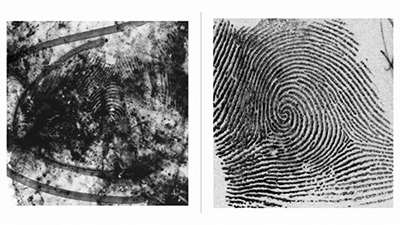
LatentSleuth - Advanced Latent-to-Reference Matching Tool
LatentSleuth 2.0, a revolutionary matching tool to aid Latent Print Examiners (LPEs) in palm fragments and difficult finger impressions that exhibit:
- Lack of Cores
- Unknown/misleading orientation
- Minimal friction ridge detail/minutia
- Origins from tips and joints.

Outperforms existing matching algorithms on latent impressions incorporating all usable information rather than only minutiae as in traditional approaches enabling more challenging latent prints to be searched.
Offloads complex print searching to the novel matching algorithm.
Assists in comparing latent prints to known suspect reference prints, victim elimination sets, and candidates from AFIS searches.

- Mark maiden pairs
- Paint Ridges
- Write Notes